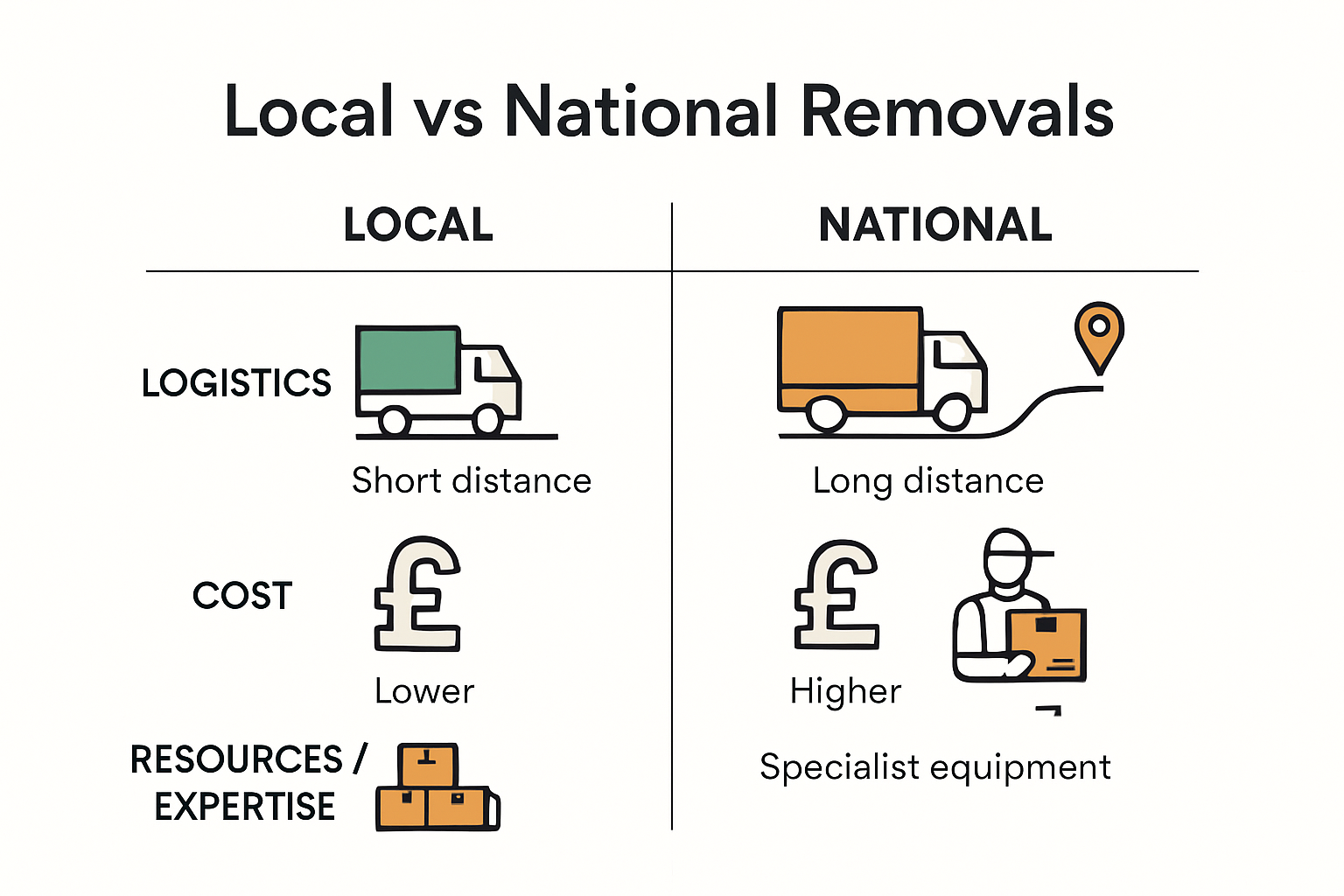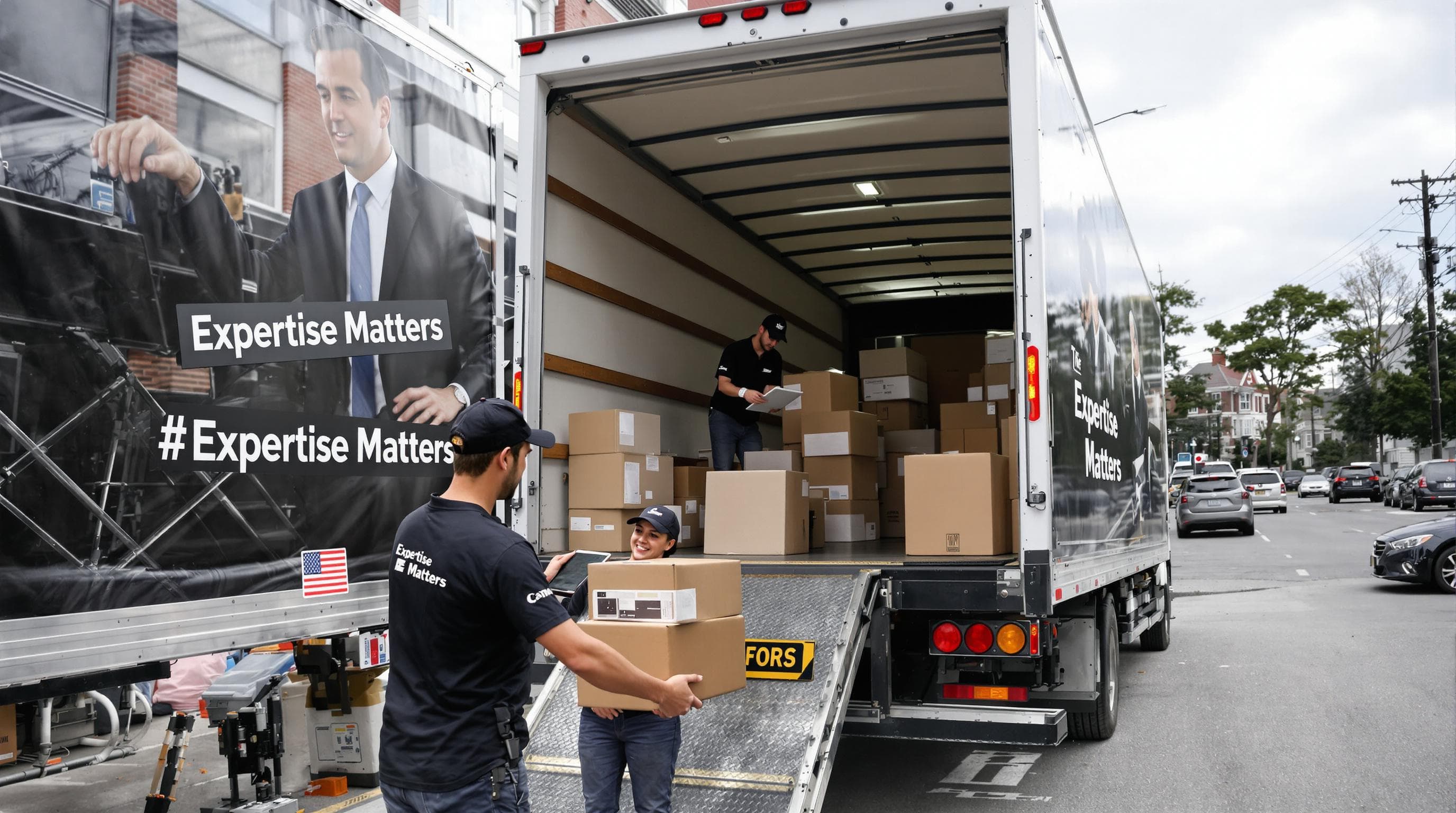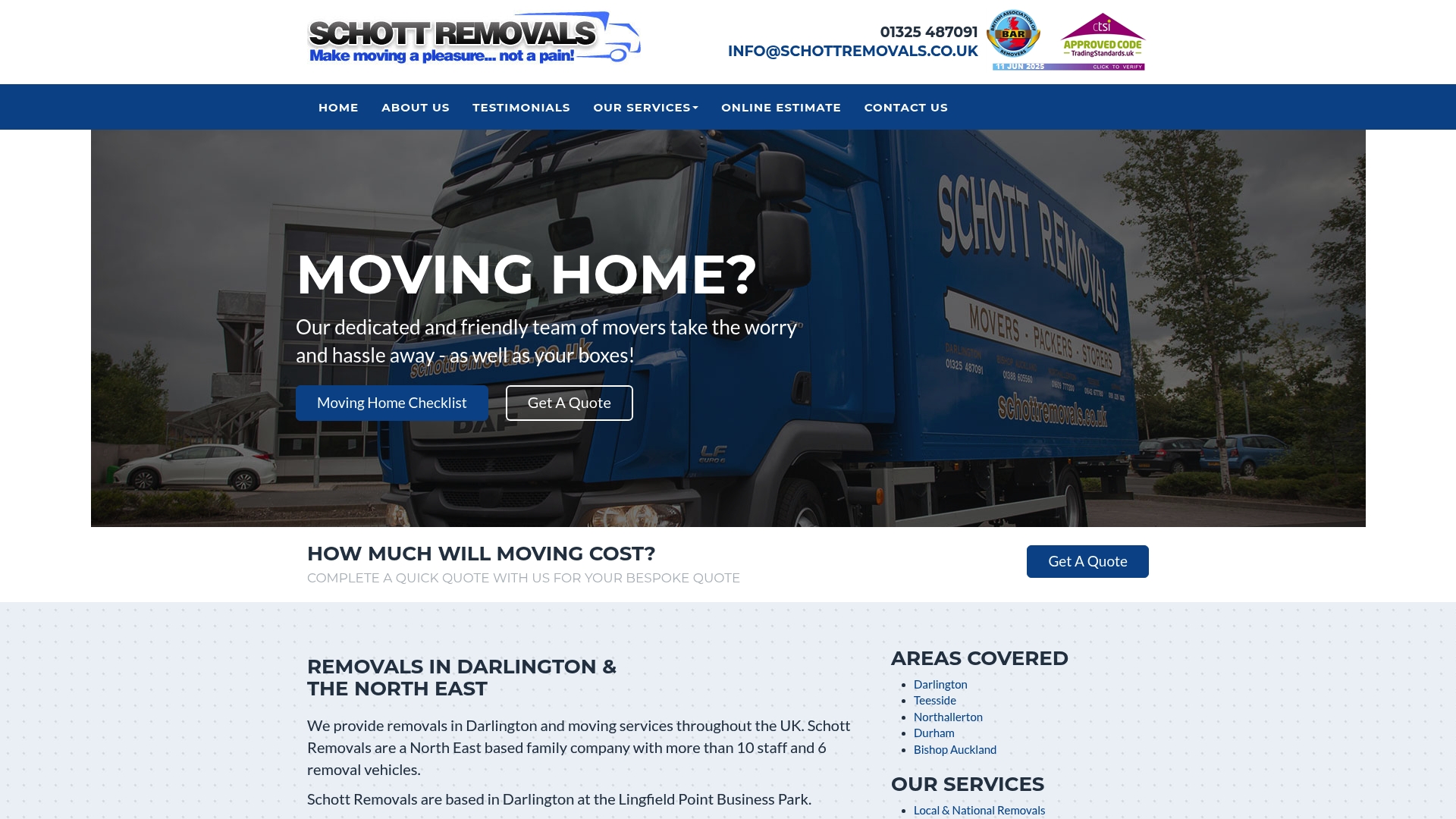
Choosing between local and national removals can feel overwhelming, especially as within-county moves make up around 65 percent of all relocations. You might think the biggest factor is simply distance, but the real complexity lies far deeper. What most people miss is how differences in planning, pricing, and expertise actually shape your moving experience far more than mileage ever could.
| Takeaway | Explanation |
|---|---|
| Understand Logistics | Local removals involve simpler logistics and can be completed in a day, while national removals require intricate planning and coordination across longer distances. |
| Evaluate Costs Thoroughly | Local moves typically use hourly rates, whereas national moves involve complex pricing based on distance, weight, and additional services. Obtaining multiple estimates is crucial. |
| Assess Professional Expertise | The expertise needed varies; local moves can use smaller teams and standard equipment, while national relocations require larger vehicles and logistically skilled personnel. |
| Plan for High-Value Moves | Specialised care is essential for transporting high-value items, including custom packing solutions and climate-controlled transport, necessitating a thorough risk management approach. |
| Communicate Effectively | Maintaining clear communication with your moving team is vital for a smooth process; it reduces misunderstandings and facilitates prompt issue resolution. |
Moving home involves complex decisions, and understanding the key differences between local and national removals can significantly impact your relocation experience. While both types of moves share the fundamental goal of transporting your belongings, they differ substantially in scope, complexity, and required resources.

Local removals typically involve shorter distances within the same city or county, which generally translates to simpler logistics. These moves often require less extensive planning and can usually be completed within a single day. Precise coordination becomes crucial when dealing with local moves, especially in urban areas with limited parking or complex access routes.
In contrast, national removals demand intricate planning and coordination. Check out our comprehensive moving guide for detailed insights into long-distance relocation strategies. These moves involve multiple logistical challenges, including route planning, potential overnight stops, and coordinating transportation across different regions.
Local moves are typically priced based on hourly rates and the volume of items being transported. According to research from the Joint Center for Housing Studies, within-county moves account for approximately 65% of all relocations, reflecting their relatively straightforward nature.
National removals, however, involve more complex pricing structures. Costs are calculated based on distance, total weight of belongings, additional services required, and potential storage needs. The Brookings Institution reports a growing trend of long-distance moves, which suggests increasing complexity in removal services.
Local removals generally require smaller vehicles and a smaller team of movers. The proximity allows for more flexible scheduling and quicker response times. Removal teams can often complete local moves with standard equipment and fewer specialized resources.
National removals demand significantly more resources. Larger removal vehicles, specialized packing materials, and teams with extensive experience in long-distance transportation become essential. Professional movers must navigate potential challenges like varying road conditions, different regional regulations, and the need for secure, climate-controlled storage during transit.
A Pew Research Center study highlights that moves are often motivated by complex life changes, underscoring the importance of choosing the right removal service that can adapt to your specific needs.
Whether you’re planning a local or national move, understanding these key differences will help you make an informed decision and ensure a smoother, more efficient relocation process.
To help clarify the main distinctions, the following comparison table summarises the key differences between local and national removals as presented above.
| Factor | Local Removals | National Removals |
|---|---|---|
| Distance | Within same city or county | Across regions/countries |
| Logistical Complexity | Simple, completed in a day | Complex, requires route & overnight planning |
| Pricing Structure | Hourly rates, volume-based | Based on distance, weight, services, storage |
| Resource Requirements | Smaller vehicles, small teams, standard equipment | Large vehicles, specialised packing, experienced teams |
| Scheduling | More flexible | Needs advance coordination, possible delays |
| Storage Needs | Rarely required | May require temporary storage |
| Regulatory Considerations | Minimal | Must consider regional regulations |
Selecting the right removal option requires careful consideration of multiple factors beyond simple distance. Your unique circumstances, budget, and specific moving requirements will ultimately determine the most suitable approach for your relocation journey.
Before deciding between local or national removals, conduct a comprehensive evaluation of your specific situation. Personal circumstances play a critical role in determining the most appropriate moving strategy. Consider factors such as total volume of belongings, time constraints, budget limitations, and potential complexity of the move.
According to the Better Business Bureau, consumers should thoroughly assess their individual requirements before selecting a moving service. This might include determining whether you need full packing services, require storage solutions, or have specialised items that demand expert handling.
Cost considerations extend far beyond simple price comparisons. Learn more about selecting the right removal strategy to understand the nuanced pricing structures. National moves typically involve more complex pricing models that include transportation distance, total weight, additional services, and potential overnight accommodations.
As Fox Business recommends, obtaining multiple estimates is crucial. Reputable removal companies should provide transparent pricing that breaks down all potential expenses, helping you avoid unexpected costs during your relocation.

The level of professional expertise required varies significantly between local and national moves. Local removals might be manageable with smaller teams and standard equipment, whereas national relocations demand specialised skills, larger vehicles, and comprehensive logistical planning.
Key considerations include:
By carefully weighing these factors, you can make an informed decision that ensures a smooth, stress-free moving experience tailored precisely to your unique needs. Remember that the cheapest option is not always the most cost-effective in the long run.
Choosing the right removal service is about finding the perfect balance between professional expertise, comprehensive service, and value for money.
To assist your personal assessment, the following checklist table summarises the essential factors to consider before selecting a removal service.
| Consideration | Description | Checked? |
|---|---|---|
| Volume of Belongings | Assess the total items and special requirements | |
| Time Constraints | Determine tight moving deadlines | |
| Budget Limitations | Consider your total budget for the move | |
| Need Packing Services | Do you require professional packing? | |
| Storage Solutions Required | Is temporary storage necessary? | |
| Specialist Item Handling | Fragile, valuable or oversized belongings present? | |
| Insurance and Credentials | Has the mover verified insurance and credentials? |
Business and high-value relocations represent a unique challenge that demands exceptional precision, strategic planning, and specialised expertise beyond standard residential moving services. These moves require a comprehensive approach that considers not just physical transportation, but also operational continuity, asset protection, and minimal disruption to business activities.
Corporate relocations are far more complex than simple geographical transitions. According to research from Camoin Associates, 62% of companies relocating since 2022 have strategically moved to cities with smaller populations and lower office space costs. This trend underscores the critical importance of thorough location strategy and financial analysis.
Learn about professional moving strategies that can minimise operational disruption during corporate moves. Successful business relocations require meticulously coordinated logistics, including precise inventory management, secure equipment transportation, and minimal downtime.
High-value moves demand extraordinary care and specialised handling. Businesses and wealthy individuals require removal services that offer comprehensive protection for expensive equipment, sensitive technological infrastructure, art collections, and irreplaceable items.
Key considerations for high-value moves include:
As CBRE experts highlight, effective corporate relocations go beyond physical movement, integrating location strategy with comprehensive change management to ensure seamless operational transitions.
A thorough financial analysis is crucial when planning business relocations. Business Performance Management experts emphasise the importance of comparing current operating costs against projected expenses in the target location to understand the true financial implications of relocation.
Risk management strategies should include:
Businesses and high-net-worth individuals require removal services that offer more than simple transportation. They need strategic partners who understand the nuanced complexities of high-stakes relocations, providing tailored solutions that protect assets, minimise risk, and ensure smooth transitions.
Choosing the right removal partner becomes a critical business decision that can significantly impact operational efficiency, financial stability, and long-term strategic objectives.
Successful removals require meticulous planning, strategic preparation, and proactive risk management. Navigating the complexities of relocation demands a comprehensive approach that addresses potential challenges before, during, and after the move.
Effective preparation is the cornerstone of a seamless removal process. Explore our comprehensive moving preparation guide to understand the critical steps in organizing your move. According to Chubb’s moving experts, creating a detailed inventory of your possessions is crucial. This practice not only helps track items but also facilitates potential insurance claims and ensures nothing gets lost during transit.
Key pre-move preparation steps include:
Moving involves significant physical risks that require careful management. Moving.com safety guidelines emphasize the importance of proper lifting techniques and equipment to prevent injuries. Proper lifting mechanics can significantly reduce the risk of strains and accidents during the move.
Critical safety recommendations include:
The U.S. Moving Protection Organization highlights the critical role of continuous communication throughout the removal process. Maintaining open lines of communication with your removal team ensures transparency, reduces misunderstandings, and helps address potential issues promptly.
Essential communication strategies include:
A successful removal process is not just about transporting items from one location to another. It’s about managing risk, ensuring safety, and creating a stress-free experience that protects your belongings and your peace of mind.
By implementing these comprehensive strategies, you can transform a potentially challenging move into a smooth, efficient, and secure transition.
Local removals involve shorter distances within the same city or county, resulting in simpler logistics, while national removals pertain to longer distances across regions, requiring more complex planning and coordination.
Local moves typically utilise hourly rates based on the volume of items, whereas national moves have more complex pricing that considers distance, weight, additional services, and storage needs.
Local removals often require smaller teams and standard equipment, while national removals necessitate larger vehicles, specialised packing, and teams with extensive logistical experience.
Businesses should focus on strategic relocation planning, high-value asset transportation, and financial risk management to minimise operational disruption and ensure a secure relocation process.
Choosing between local and national removals can feel daunting, as the article highlighted with its focus on planning, pricing structures, and the importance of tailored expertise. If you are facing stress about logistics, unsure which moving solution really fits your needs, or concerned about hidden costs, you are not alone. Many people discover that without the right support, differences in planning and professional know-how can turn moving day into a series of unwanted surprises.
Explore our Testimonial Showcase to see how others overcame these same problems with us.

Act now to secure the peace of mind that comes from working with a family-run company trusted for reliability and customer care across 30 years. From local house moves in Darlington to complex national or even European relocations, Schott Removals delivers comprehensive solutions matched to your specific requirements. Request your quote today and take the guesswork out of your move.
Unit 20, Lingfield Point
McMullen Road,
Darlington
DL1 1RW
Telephone: 01325 487091
Email: info@schottremovals.co.uk